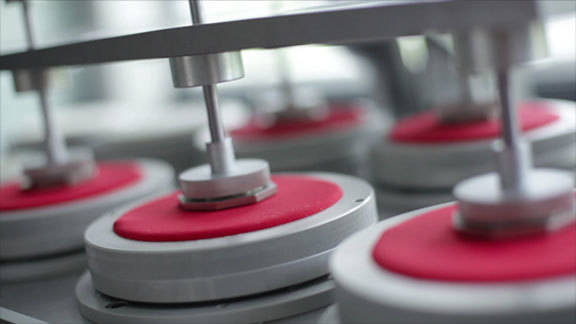Wyzenbeek & Martindale
In the textile world, these are household names.
There are a number of ways to ensure that textiles are right for an application and will last, but the most well-known performance tests for textiles are for abrasion and measure the surface wear of a textile. Surface wear is a result of something repeatedly rubbing against the textile — typically the clothing that someone is wearing as they get up and down, and move around.
Named after their inventors, Andrew Wyzenbeek and J.G. Martindale, there are two basic tests used to measure abrasion for textiles. They use two different methods, and the results don’t correlate, but both provide important information regarding how a textile will wear.
Wyzenbeek is regularly used for synthetic fibers, while Martindale is typically used on wool and natural fibers. Respectively, furniture manufacturers in the United States apply the Wyzenbeek test more commonly and European companies more frequently use Martindale. (Synthetics are used more in the US and wool is used more in Europe.)
The Wyzenbeek test uses a machine with cotton duck fabric as the abrading material and rubs it back and forth across the test fabric. Each pass back and forth is called a “double rub”. Operators run the test until there is noticeable wear in the area being rubbed or until two yarns break. A score of 15,000 double rubs is qualified for low traffic contract use and a score of 30,000 double rubs is approved for heavy traffic contract use.
The Martindale test uses a machine that rubs the test fabric against an abrasive fabric, which is typically wool. The test fabric is rubbed in an elliptical motion (each one comprising a cycle). The test continues until two yarns break or there is a noticeable change in appearance on the test fabric. For Martindale, a score of 20,000 cycles is qualified for low traffic contract use and a score of 40,000 cycles correlates to heavy traffic use.
It would seem that the higher the number the better, but that’s not always true. Results above 100,000 double rubs or cycles do not necessarily mean that the textile will last forever. There are a lot of factors that affect the textile’s overall durability, including where the furniture is being used and how it is maintained. And just because a textile is labeled as having 300,000 double rubs, it does not mean it will last 10 times longer than textiles with 30,000 double rubs.
Last, and truth be told, there is actually one more test method that measures abrasion on textiles – the Taber Tester method. This test is typically used on printed coated textiles and measures print retention. The Association for Contract Textiles guidelines require a 3 or higher result on the Taber Tester method.
Guidelines for public space textiles are not cut and dry, but we (and our partners Maharam) can help. Upon review of textiles samples and the needs of your project, give us a ring. We can pay tribute to Wyzenbeek and Martindale together, talk double rubs, and find the best solution.

